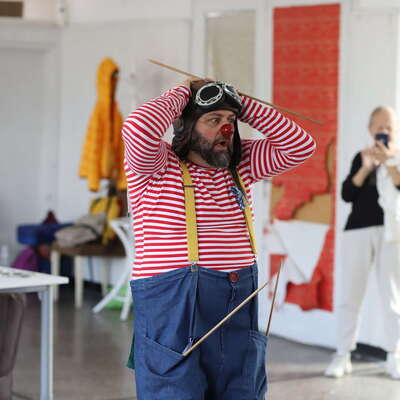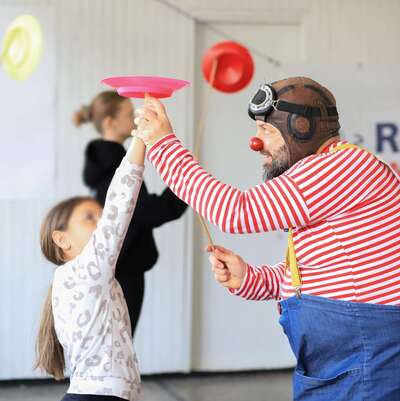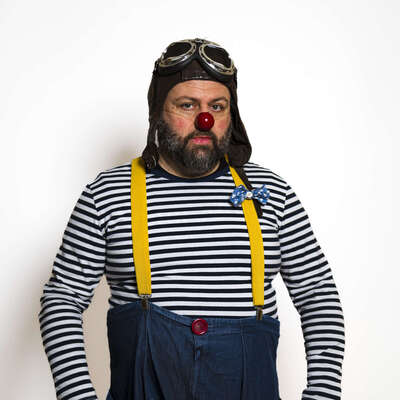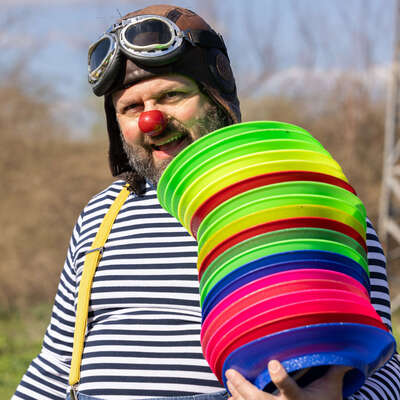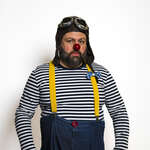#MeetTheArtist: Mario Perković
Mario Perković has been a RED NOSES clown artist in Croatia since 2010 and part of the Emergency Smile International team since 2016. Inspired by the pilot from The Little Prince and the adventurous woman from Up, Mario’s clown is all about helping children shine—bringing joy, curiosity and a little bit of magic to those who need it most. Before becoming a clown, he ran an NGO for children’s rights, led hospital art workshops and worked with displaced children, experiences that shaped the way he connects with people today.
- Who is your clown character? What inspired you to create this character and what kind of ‘superpowers’ does it have?
My character is inspired by the animated films The Little Prince and Up. These characters support lonely and isolated children and help them to shine. The pilot from The Little Prince and Ellie from Up both wear pilot hats—which I also wear as part of my costume.
My clown’s name in Croatian, ‘Žbunj’, means ‘little bush’, and I added ‘Darko’, which is a Croatian name. But in English, Darko Žbunj, it could mean ‘dark bush’—like my hair!
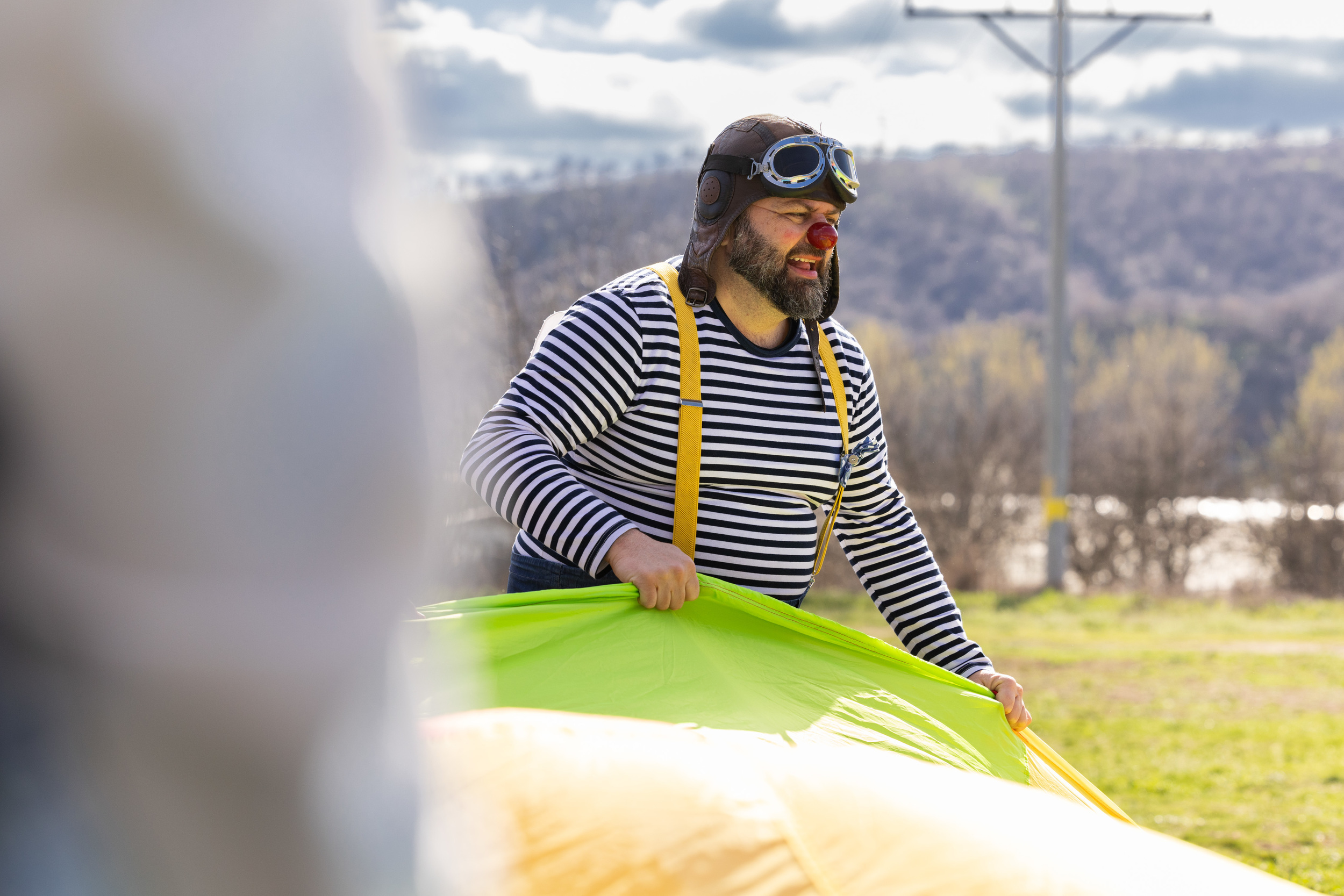 Enlarge photo
Enlarge photoMario Perković during the Emergency Smile mission in Bulgaria, 2025.
- How do you usually prepare before clowning—both emotionally and practically?
For me, one of the most important things is to prepare together with my colleagues—maybe over a coffee, through some conversations or with small exercises if we feel disconnected. Everyone brings their personal life to the visit, so it’s important to check in: How are you today? How’s your energy? When we connect like this, we can bring joy. When we’re disconnected, it’s very hard to do that.
I also check my make-up, my props, my pockets—every pocket has a prop and everything must be in the right place!
- What kind of difference do you hope to make in the world through your clowning?
We bring a little spark into the cold reality of people in crisis, and we hope to inspire others to bring their own sparkle—or simply to be better human beings.
- What message or feeling do you want to share with the people you meet?
One of the most important rules of the clown is to accept all your feelings—and share them with the audience. I think this also works in life. When others see that you are sad or angry, they can connect with your emotions. And when you realise that everyone has problems—because we’re all human—you feel less alone.
- How do you stay motivated or positive during difficult situations?
When you are connected with your team, you can do anything. That kind of support means everything. For clowning—it’s all about the team.
- Does your clown character ever appear in your everyday life?
Yes, a little bit—especially when I meet people who are angry or frustrated! I always want to wake them up from that frustration and help them realise they are here and now. Life needs to be lived right here, right now, because when you live in the present, you are open to everything.
During my hospital visits, I always wish to be there—truly present.
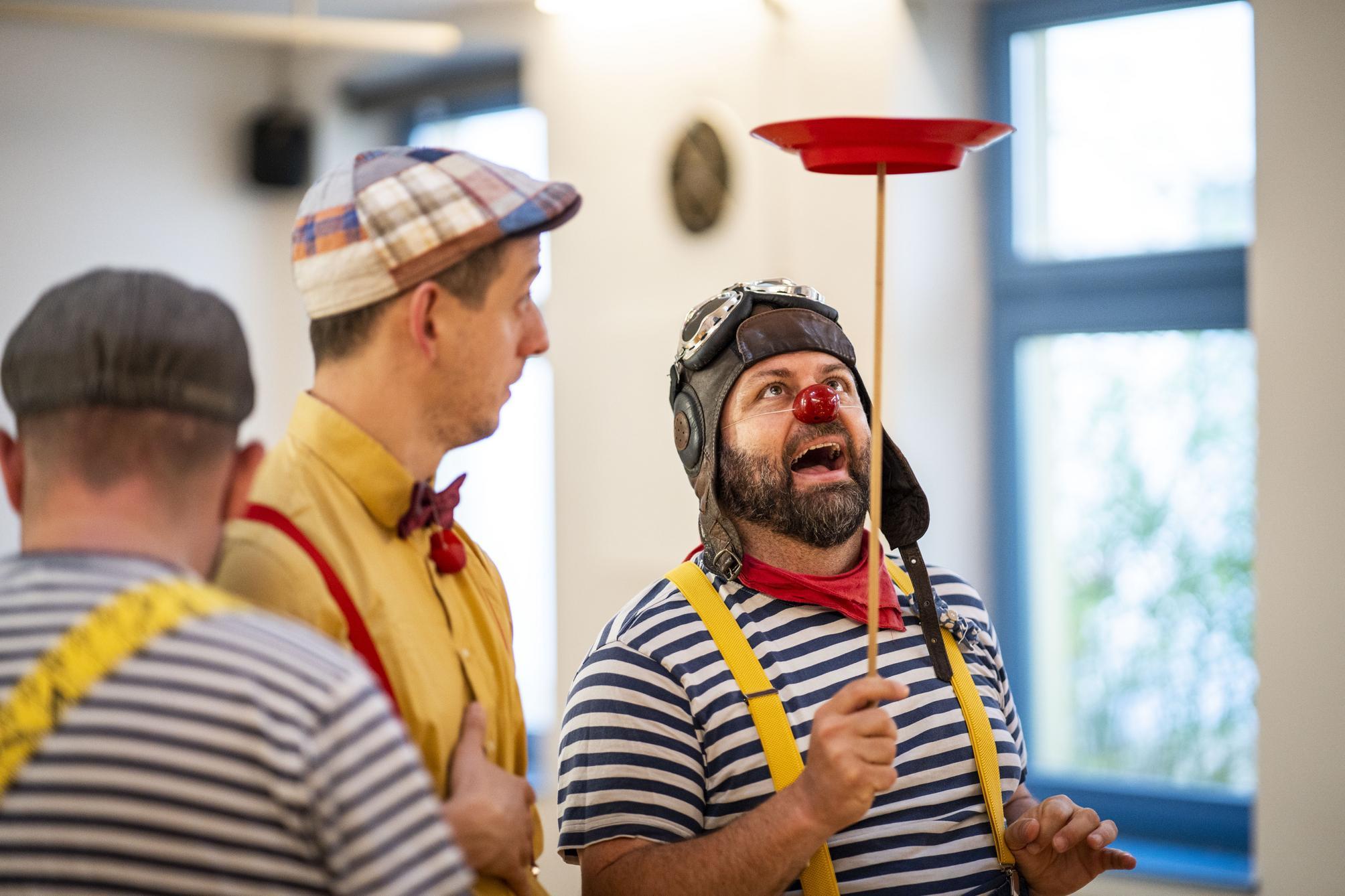 Enlarge photo
Enlarge photoBehind the scenes: Mario Perković and the Emergency Smile team rehearsing for their mission in Georgia
- Why is clowning in crisis situations important? Can you tell us about a moment that really touched you?
Because we bring joy and happiness, and we help people smile again.
I remember one moment during the big flood in Croatia in 2014. Many people lost everything and had to move to a sports hall that became a shelter. About 200 people—no walls, everyone sleeping together.
I saw a father crying, and his little daughter looking at him. She couldn’t change his mood. Children want to see their parents happy, and usually parents react quickly to their child’s smile—but this father didn’t. He was inconsolable, and the girl was very sad. Then the clowns arrived. The girl became happy and distracted, and when her father saw her smiling, he smiled. Then she saw him smiling—and it became a magic circle, you know?
- What first inspired you to become a clown?
For me, the film Patch Adams was a big inspiration. When I went deeper into clowning, I realised clowns had always been part of my life somehow. I loved watching Charlie Chaplin and Mr Bean films—I understood how humour helps.
That film inspired me to volunteer with children in hospitals. I led an art workshop for children—we even painted a wall in my town’s hospital. That was before I became a healthcare clown.
Later, a friend from the non-profit organisation where I volunteered told me she was going to become a healthcare clown in Croatia—so I decided to audition too! And here we are!
- What do you enjoy most about being part of Emergency Smile?
I love connecting with other RED NOSES clown artists from different countries—exchanging knowledge, attending the Emergency Smile Annual Meeting and trainings, and travelling to meet new cultures and people.

